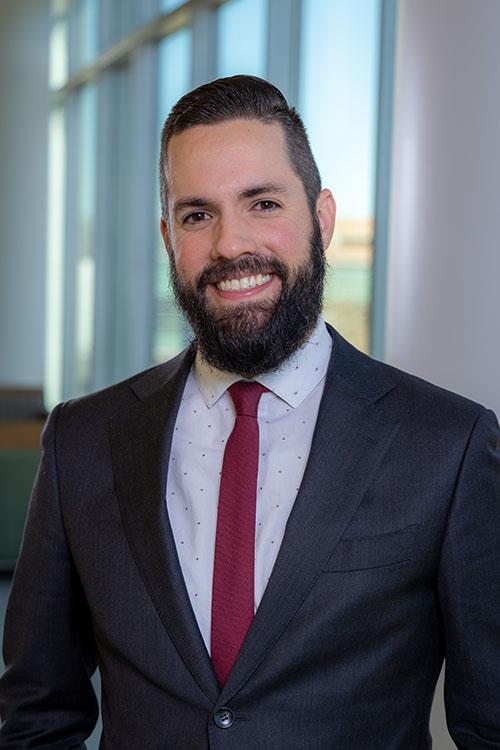Key takeaways
-
Post-concussion athletes have experienced an ongoing lack of neuromuscular control upon return to play.
-
Researchers sought to determine if an eight-week NMT intervention for post-concussion athletes returning to play could reduce rates of subsequent injuries.
-
They found the risk of reinjury over the next year in athletes who received no intervention was 3.56 times the risk of reinjury in the NMT group.
Background: reducing risk of subsequent adolescent sports-related injury after concussion
Athletes who experience a concussion are at higher risk of suffering another sports-related injury than those without concussions. After a concussion, athletes cleared to return to play (RTP) have experienced persistent deficits in neuromuscular control, which could contribute to the increased risk of reinjury.
No studies have previously examined if neuromuscular training (NMT) could affect the chances of injury when initiated at post-concussion RTP. Results from NMT interventions on adolescent athletes without a concussion suggest the opportunity for a substantial reduction in musculoskeletal injury rates.
Researchers from the Sports Medicine Center at Children’s Hospital Colorado and the Department of Orthopedics at the University of Colorado School of Medicine sought to examine the efficacy of an eight-week NMT intervention on acute sports-related time-loss injuries sustained over the subsequent year. They compared the intervention initiated after clearance to RTP with standard of care using a prospective stratified randomized clinical trial.
Study authors hypothesized the hazard of injury in the year after post-concussion RTP would be significantly greater for those randomized to standard of care relative to NMT.
Methods: comparing standard of care interventions to NMT in post-concussion athletes
Participants in Children’s Sports Medicine clinic were recruited and enrolled for participation in the study within 14 days of sustaining a concussion.

Inclusion criteria
- 12 to 18 years old at enrollment
- Confirmed concussion diagnosis by a sports medicine physician
- ≥9 post-concussion symptom inventory score
- Patients recovered by first assessment not included
Exclusion criteria
- Associated sports-related injury
- Concussion within 6 months of current injury
- Documented structural brain injury confirmed by neuroimaging
- Non-sports related concussion
- Second head injury before clearance for current injury
- Intention to retire from organized sports
Interventions
After receiving RTP clearance, athletes were randomized to NMT intervention or standard of care. Interventions were not performed between the initial visit and RTP clearance.
NMT intervention occurred twice a week for eight weeks under the supervision of an athletic trainer, focused on plyometrics, strength, technique and balance training elements and included dual-task progression as a single exercise at the end of the program. Tasks became progressively more difficult throughout rehabilitation.
Participants randomized to standard of care were instructed to comply with their physician recommendations regarding RTP and received no specific instructions from the study team. The recommendations followed the most recent consensus statement on concussions in sports during the study period.
Outcome Variables
The study authors assessed only sports-related injuries resulting in time lost from competition.

Primary outcome variable
- If a sports-related time-loss injury occurred
- Time from post-concussion RTP clearance until injury upon any subsequent injury
Secondary outcome variable
- Incidence of sports-related time-loss lower extremity musculoskeletal injuries
- Total number of injuries
- Injury severity (number of days lost)
Results: standard of care group at higher risk for another injury after concussion than NMT intervention group
Among 55 eligible participants, 32 enrolled in the study. The final analysis included 27 youth athletes:
- 11 NMT participants
- 59 days average NMT intervention
- 18 minutes mean duration per training session
- 91% of participants completed at least 75% of sessions
- 16 standard of care participants
Physical activity and concussion history
- NMT group had greater proportion already participating in physical activity
- NMT group had greater proportion with history of multiple concussions
Initial concussion sport
- NMT group had more concussions during football
- Standard of care group had more concussions during soccer
Injuries after RTP clearance
Incidence of injuries per 1,000 competitive exposures (within one -year follow-up period)
- Standard of care: 10.2
- NMT group: 3.4
Injuries after one-year post-concussion RTP
- 1 NMT participant sustained more than one injury
- 5 standard of care participants sustained more than one injury
Incidence of time-loss lower extremity musculoskeletal injury
Incidence of time-loss lower extremity injuries per 1,000 competitive exposures (within one-year follow-up period)
- Standard of care: 6.2
- NMT group: 2.4
Key results
- Standard of care group significantly higher hazard of injury in first year post-concussion
- Incidence of all injuries higher for standard of care group
Discussion: NMT intervention a practical approach to reducing post-concussion injuries
Study data indicate NMT intervention is protective against sustaining a sports-related time-loss injury over the subsequent year compared to standard of care. No significant differences in injury incidence were found between groups for time-loss lower extremity musculoskeletal injuries.
The data suggest NMT intervention is a practical approach to reducing post-concussion injuries and the greatest benefit against injuries occurred during the intervention.
Conclusion: NMT intervention may significantly reduce time lost to injury.
This preliminary study found an eight-week NMT intervention after athletes were cleared to RTP after concussion significantly reduces sports-related time-loss injury over the subsequent year.
Despite study limits, these initial findings offer promising evidence for consideration when developing post-concussion RTP and rehabilitation programs for athletes.
Featured Researchers
Patrick Carry, MS, PhD
Assistant professor
Orthopedics
University of Colorado School of Medicine

David Howell, PhD
Research director
Sports Medicine Center
Children's Hospital Colorado
Director
Colorado Concussion Research Laboratory
University of Colorado School of Medicine

Gregory Walker, MD
Pediatric Sports Medicine
The Orthopedics Institute
Children's Hospital Colorado
Assistant professor
Orthopedics
University of Colorado School of Medicine

Julie Wilson, MD
Co-director
Concussion Program
Children's Hospital Colorado
Associate director
Colorado Concussion Research Laboratory
University of Colorado School of Medicine





 720-777-0123
720-777-0123











